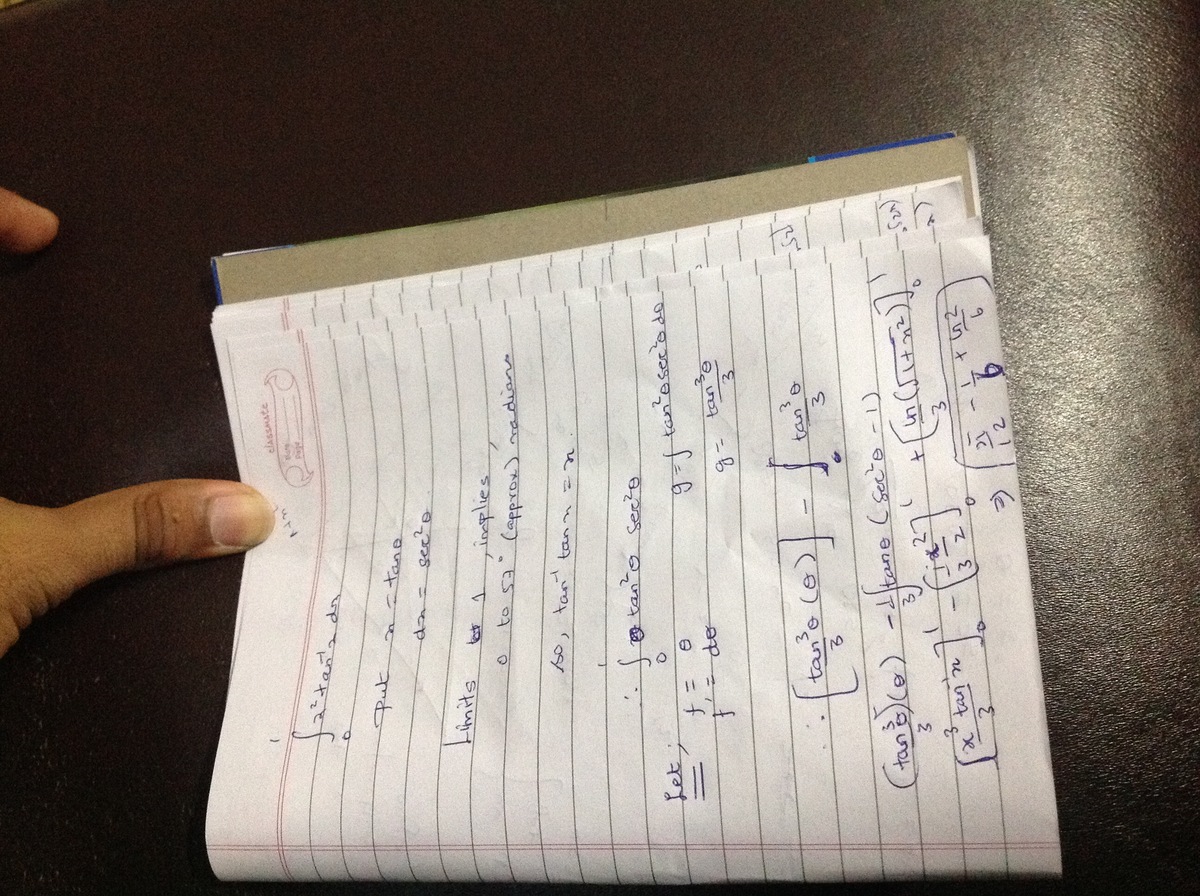Do you know the best way to integrate this?
∫ 0 1 x 2 tan − 1 x d x = A π − D B − ln C If the above equation holds true for positive integers A , B , C and D such that D is minimized, find A + B + C + D .
The answer is 21.
This section requires Javascript.
You are seeing this because something didn't load right. We suggest you, (a) try
refreshing the page, (b) enabling javascript if it is disabled on your browser and,
finally, (c)
loading the
non-javascript version of this page
. We're sorry about the hassle.
3 solutions
∫ 0 1 x 2 tan − 1 x d x = [ ∫ 0 1 x 2 d x ] [ tan − 1 x ] 0 1 − ∫ 0 1 [ ∫ x 2 d x ] [ d x d tan − 1 x ] d x = [ 3 x 3 ] 0 1 [ tan − 1 x ] 0 1 − ∫ 0 1 [ 3 x 3 ] [ 1 + x 2 1 ] d x = [ 3 1 ] [ 4 π ] − 3 1 ∫ 0 1 [ 1 + x 2 x 3 ] d x = 1 2 π − 3 1 ∫ 0 1 [ x − 1 + x 2 x ] d x = 1 2 π − 3 ∗ 2 1 ∫ 0 1 [ 2 x − 1 + x 2 2 x ] d x = 1 2 π − 6 1 [ x 2 − l n ( 1 + x 2 ) ] 0 1 = 1 2 π − 6 1 [ 1 − l n 2 − ( 0 − l n 1 ) ] = 1 2 π − 6 1 − l n 2
Hence A + B + C + D = 1 2 + 1 + 2 + 6 = 2 1

Similar solution to @Noel Lo 's, perhaps better presentation.
I = ∫ 0 1 x 2 tan − 1 x d x By integration by parts, f ′ = x 2 , g = tan − 1 x = 3 x 3 tan − 1 x ∣ ∣ ∣ ∣ 0 1 − 3 1 ∫ 0 1 1 + x 2 x 3 d x = 3 1 4 π − 3 1 ∫ 0 1 1 + x 2 x + x 3 − x d x = 1 2 π − 3 1 ∫ 0 1 ( x − 1 + x 2 x ) d x = 1 2 π − 3 1 [ 2 x 2 − 2 1 ln ( 1 + x 2 ) ] 0 1 = 1 2 π − 6 1 − ln 2
⟹ A + B + C + D = 1 2 + 1 + 2 + 6 = 2 1